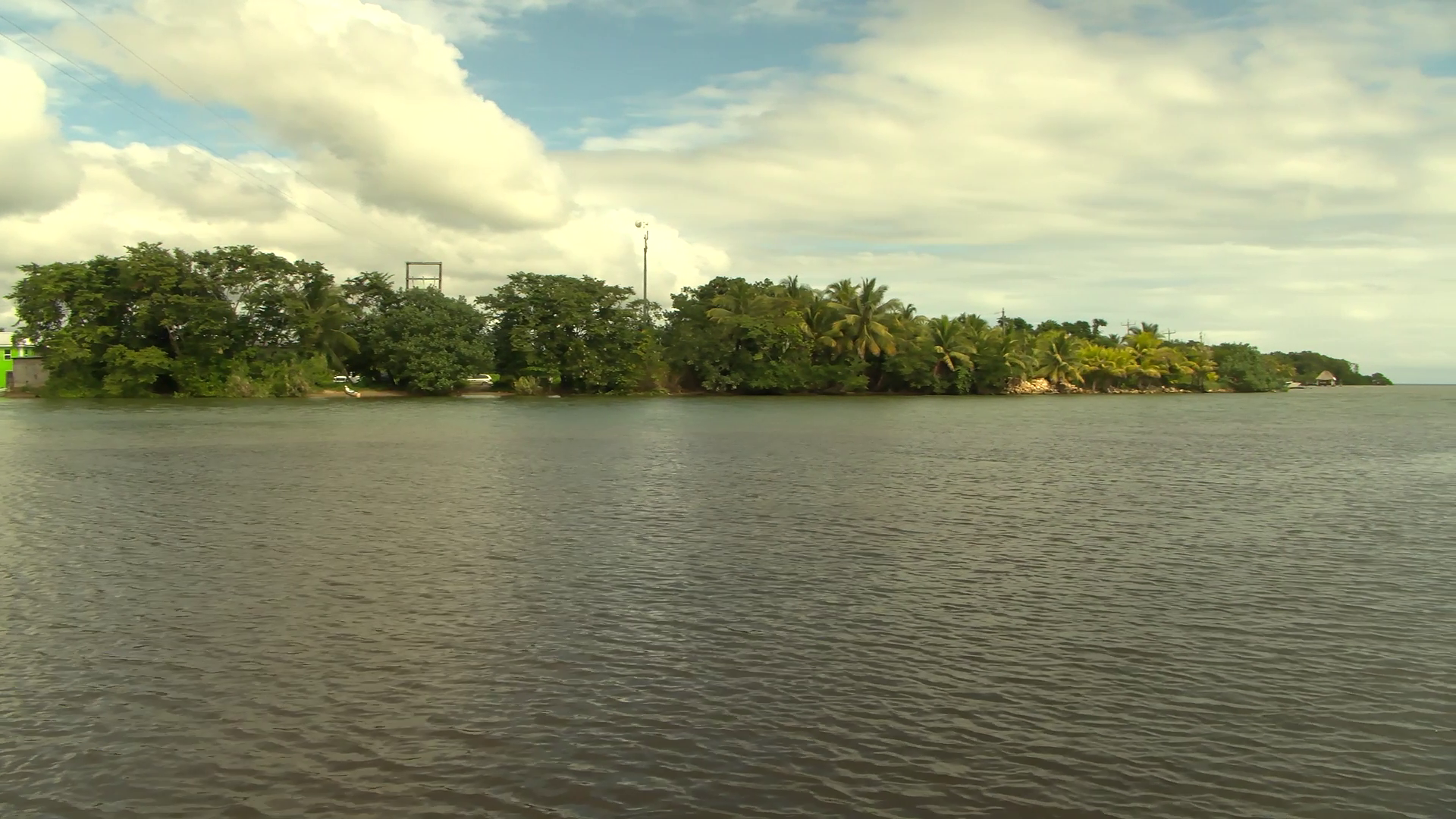Residents of Monkey River Town are deeply worried about their community’s future. It’s a tale many Belizeans know all too well. For decades, this small coastal town has been slowly disappearing into the sea. The situation has only gotten worse over the years, thanks to the effects of climate change. Tonight, the residents are raising their voices about yet another threat to their riverbank—the booming eco-tourism industry. News Five’s Britney Gordon brings us the story.
Just three months ago, this tree stood proudly on the banks of Monkey River Town. Brian Garbutt, a local resident, fondly remembers taking his son there to hunt for iguanas. Now, it’s just another piece of driftwood, claimed by the relentless erosion of the riverbanks. For years, the residents have been battling this erosion, but as Garbutt points out, the problem has only gotten worse.
Brian Garbutt, Monkey River Resident
“In the late 1990’s that’s when tourism get started here in Monkey River, right? About ninety-seven, ninety-eight, right? For the first couple of years, everyone that would do their tour, they would go up pretty slow, right? But on their way back down about noon time, you know, the sun would be up, the humidity would be real high, pretty much at that time. Most of the wildlife would seek shelter to get away from that immediate heat, right? So there’s not much to see. And that’s when these guys started to run their boat full throttle. And I have been I would say get awake about two weeks ago when I went up into the river and I could have seen the effect that are taking place against the river.”
“Can you imagine a boat with about twenty people doing about twenty miles an hour within, the widest area within our river? Probably would be about thirty yards. You imagine five, six of these boats just keep banging on direct onto the clay.”
These boats, carrying anywhere from ten to thirty passengers, send waves crashing into the banks as they speed by. But erosion is just one of the negative effects residents have noticed. Ebenezar Gordon, a tour guide since the early 2000s, often joins these tour boats to educate visitors about the local flora and fauna. While his livelihood relies on these tours, it relies even more on preserving his home.
Ebenezer Gordon, Monkey River resident
“The whole environment changing because of big companies like the farming companies, you know. They have made big trench for the farm, so it do affect the water around here. When we were younger, when it’s raining, this river used to take long before it goes down. But now, two, two days maybe the longest and it’s get calms around here. If you notice around here, you see a lot of erosion taking place.”
Residents also say that the boats stir up sediments, which the river can’t wash away, leading to shallow pockets of water. Garbutt, a fisherman by trade, mentions that navigating the river is becoming increasingly difficult.
“Let’s say for the day, one ton of sediment would be coming downstream, right? And the impact that these boats are doing to this river at this present moment, one ton would come down and meet with twenty tons. So what would happen? That would just keep trapping up and trapping up. That eventually, what I have seen in my lifetime, if the almighty permits me with another ten years, it would be very impossible for me to get up in the river within a 23 foot Mexican skiff.“
Residents suggest imposing a speed limit for boats passing through the area. They also propose a small fee for tour guides to help fund the town’s maintenance.
“We have that stuff in place for a long time and it’s not having enforcements. I wish they could enforce it for us?”
Britney Gordon
“Who would be the persons in charge to enforce that?”
“Well, I think it’s BTB, you know, because the guys there know, but they just want to ignore us because we don’t have the laws to back it up.”
A few years back, locals were filled with hope when they heard about a project aimed at saving the riverbank from erosion. Residents say funds were collected, but unfortunately, the plan never materialized.
“And it’s pretty sad, you know? That guy went over there and raised that fund, have to come through the government. Literally for sure sixty percent would go to the government. So many people comes in and do their research. So much goes out. I hope that we get about a hundred thousand. Because it’s pretty sad. We have a job that would be much bigger than what they are about to do, that is done by a local writing placentia done for a house right here on our coastline in Monkey River.”
The future might seem uncertain, but the residents remain hopeful and determined to save their cherished community where the river meets the sea. Britney Gordon for News Five.
